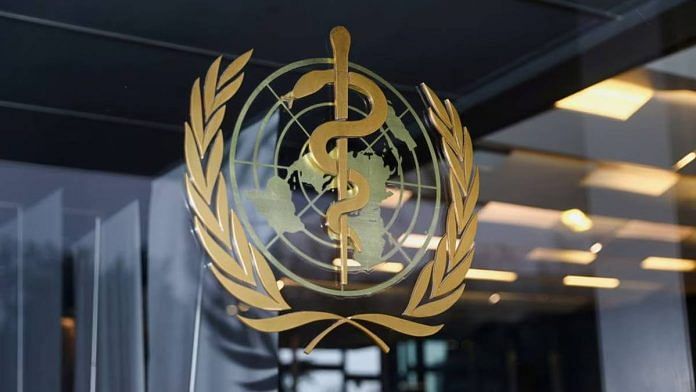New Delhi: The World Health Organization (WHO) is likely to announce aspartame, one of the most common artificial sweeteners, as “possibly carcinogenic” to humans.
Reuters first reported two weeks ago that the International Agency for Research on Cancer (IARC), an arm of the WHO meant to assess links to cancer, was preparing to list aspartame as “possibly carcinogenic”. The news has since stirred up continuous headlines, resurrecting the contentious debate around aspartame.
Reported to be about 200 times sweeter than sugar, aspartame is used particularly in “low-calorie” or “diet” foods and beverages, but is a part of a variety of products, including drinks, ice creams, chewing gums, confectionery, sauces and snacks.
The IARC, however, uses a system of classification that places aspartame at the same level of cancer hazard as aloe vera and pickled vegetables.
Despite the question of carcinogenicity popping up repeatedly, studies have found little link between aspartame and cancer.
How did the association between aspartame and cancer come to be, what does the IARC listing mean, and is it safe to consume diet sodas? Here is what data actually shows.
How is cancer risk classified?
The IARC, an international consortium comprising 27 members including the US, France, Italy, Germany, UK and India, is meant to study whether everyday things humans are exposed to are carcinogenic. It then provides data about the degree of certainty, and classifies them in various categories.
But as journalist Ed Yong noted in The Atlantic in 2015, the communication from the agency is not entirely confusion-free.
The IARC uses five categories for classification: Group 1 consists of proven carcinogens such as cigarettes, asbestos, and processed meat. Group 2 includes “agents for which, at one extreme, the degree of evidence of carcinogenicity in humans is almost sufficient, as well as those for which, at the other extreme, there are no human data but for which there is evidence of carcinogenicity in experimental animals”.
Group 2 is further divided into 2A, consisting of “probably carcinogenic” items and 2B — which aspartame is likely to be categorised under — comprising substances that are “possibly carcinogenic” to humans.
The IARC explains that “the terms probably carcinogenic and possibly carcinogenic have no quantitative significance and are used simply as descriptors of different levels of evidence of human carcinogenicity, with probably carcinogenic signifying a higher level of evidence than possibly carcinogenic”.
Group 3 is unclassifiable due to inadequate data, and Group 4 is “probably not carcinogenic” to humans.
Yong described Group 2B as a “giant dumping ground” for all risk factors that the IARC has evaluated but could not determine if they were carcinogenic, which is most things.
Additionally, experts have pointed out that the groupings indicate hazard, not risk — in other words, the potential to cause harm and not the likelihood.
Alongside aspartame now in Group 2B are aloe vera, and nickel, engine exhaust, pickled vegetables, radio frequencies, melamine, carbon black, coconut body oils, and, working in dry cleaning, textile manufacturing, printing, and carpentry. Group 2B is also where mobile phones and Monsanto’s RoundUp weedkiller reside.
Group 2A consists of hot beverages, art glass, malaria, and working night shifts.
Group 1 items that are definitely linked to cancer are salted fish, smoking, hot dogs, and medications used to treat breast cancer.
While the IARC evaluates links to cancer, it is food and drug regulatory authorities globally that certify substances as safe for consumption.
According to estimates made by the European Food Safety Authority and the US Food and Drug Administration for daily aspartame consumption allowed, an adult weighing 60 kg (132 pounds) would have to drink between 12 and 36 cans of diet soda every day to be at risk.
What do existing studies show?
The earliest concerns about artificial sweeteners such as aspartame and cancer came from a 2005 study conducted by Italian researchers on rats, but the data has not been accepted by all experts.
There have been several other studies on links between aspartame and cancer, none of which — old or new — has clearly showed evidence of causation.
In most mice studies as well, the link between aspartame and cancer could not be conclusively established.
The WHO is re-evaluating the evidence after two newer studies — a French one that found last year that people consuming higher amounts of artificial sweeteners such as aspartame were slightly likely to develop breast cancer, and a re-analysis of the original study on rats by Italian researchers.
Several flaws have been pointed out in both studies, such as asking people to fill out questionnaires on their diet, which is known to obtain highly inaccurate results. These studies also ignore confounders — a factor different from the one being studied that could be causing the results — such as people consuming a lot of aspartame are more likely to have diabetes.
According to American Cancer Society, aspartame has not been linked to any health problems except for phenylketonuria (PKU), a rare genetic disorder that prevents breakdown of aspartame.
(Edited by Nida Fatima Siddiqui)
Also Read: Artificial sweeteners don’t aid weight loss, may increase diabetes, heart disease risk, says WHO



